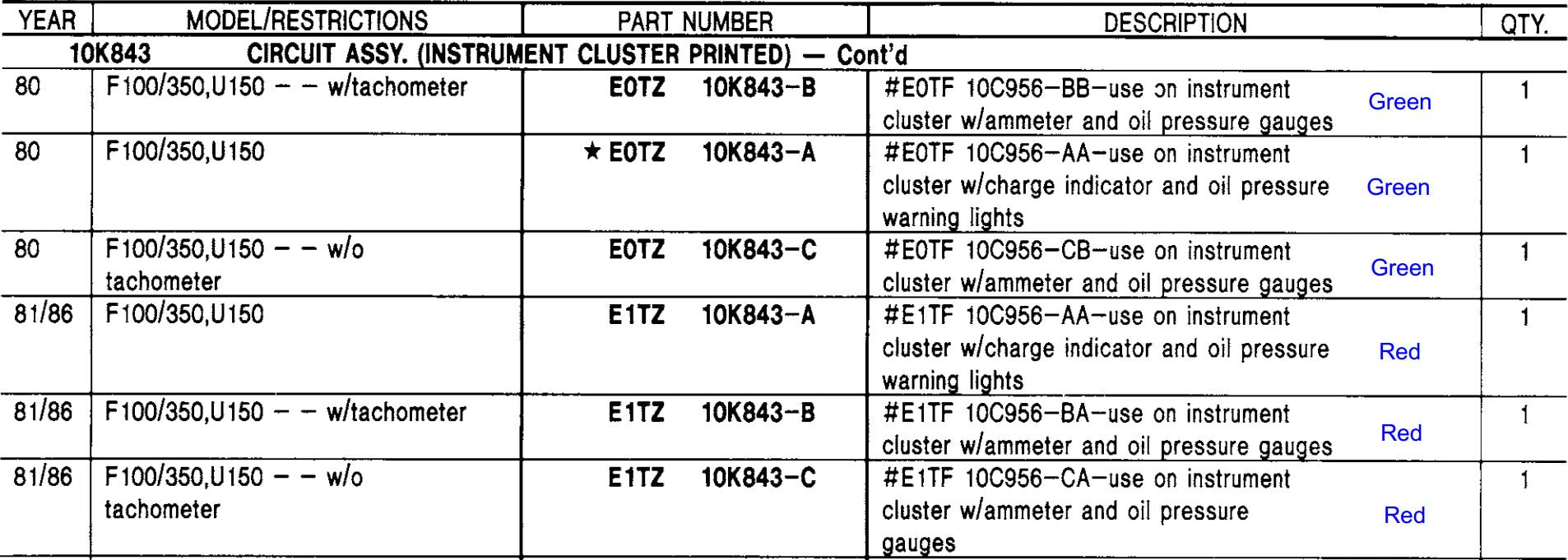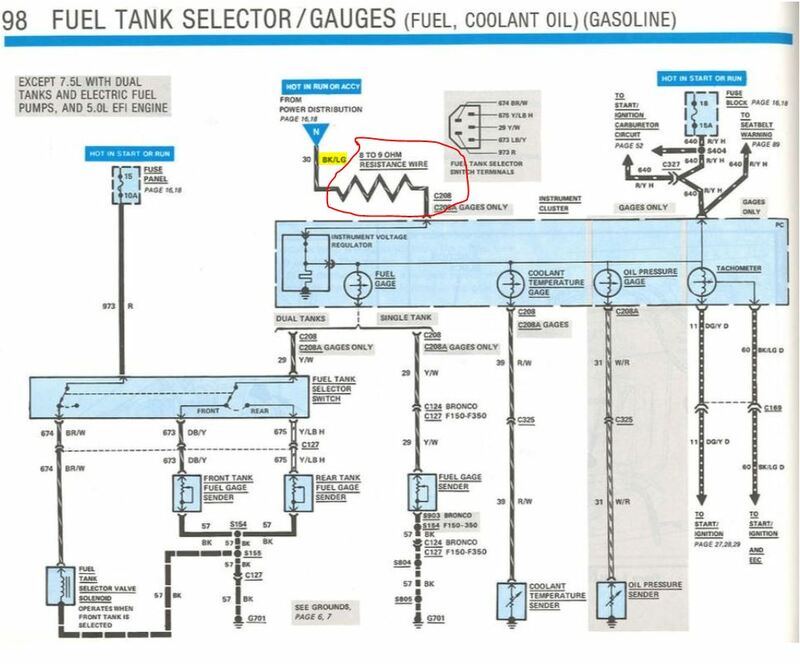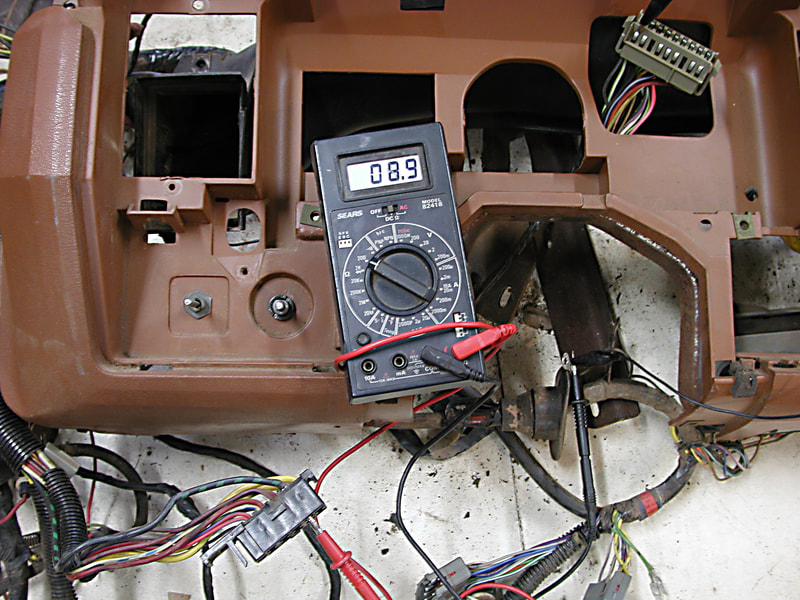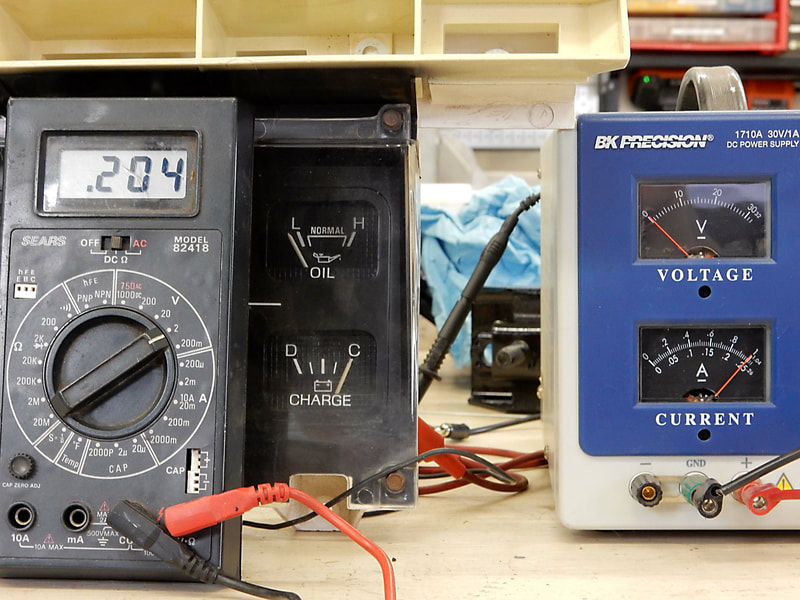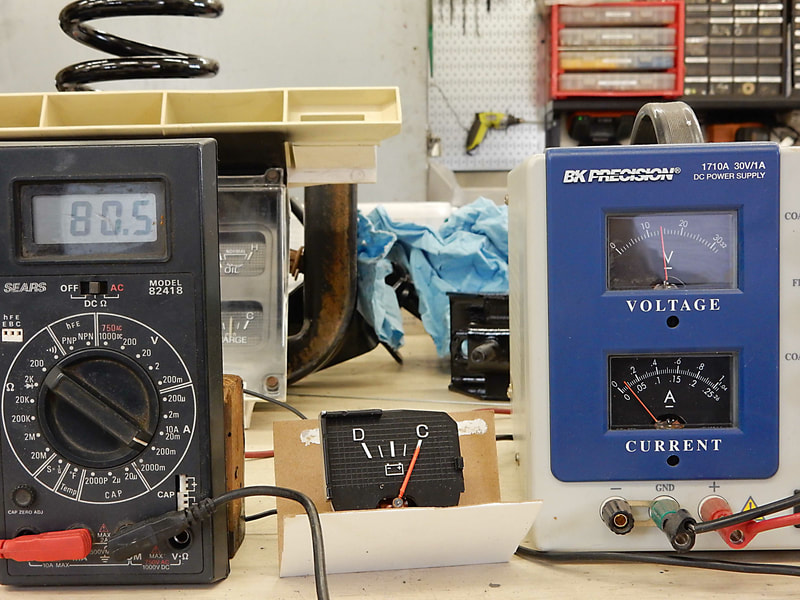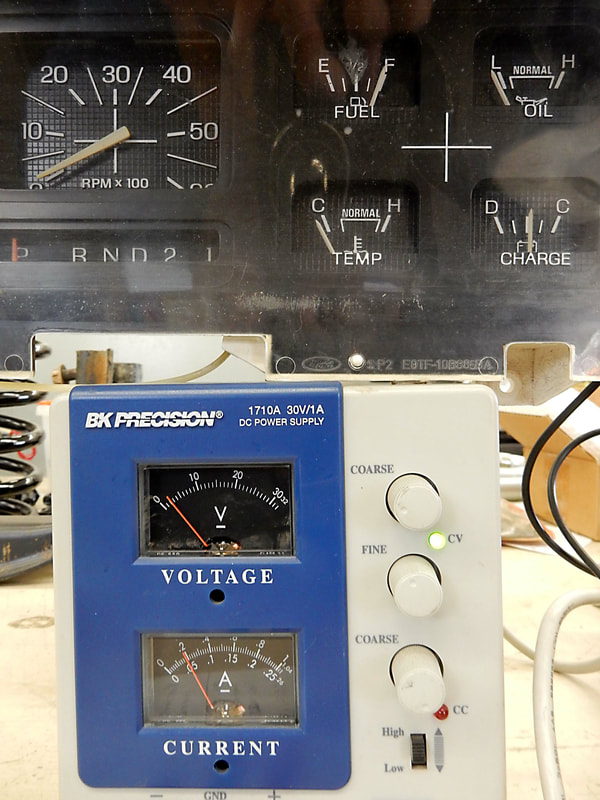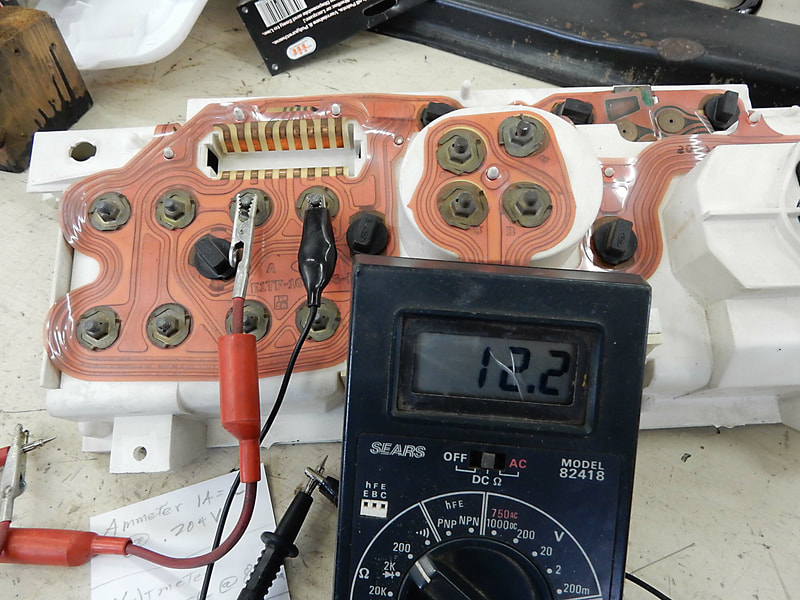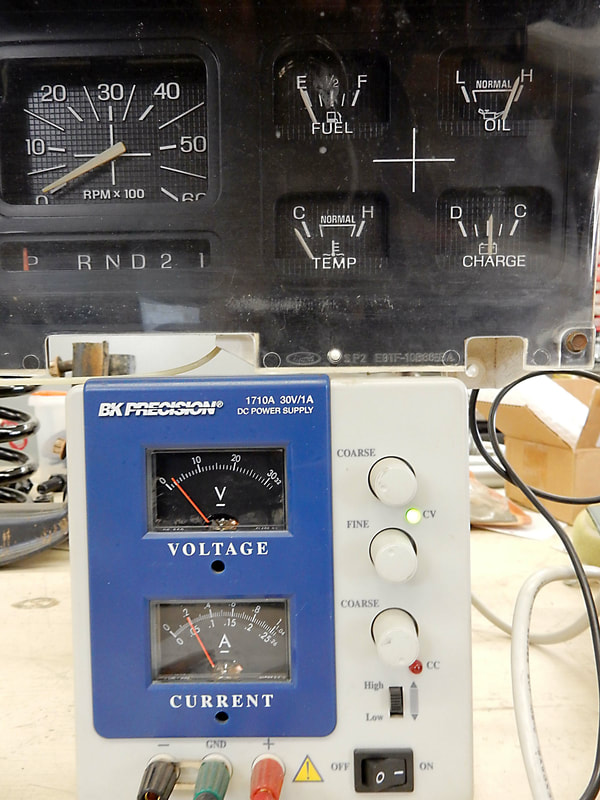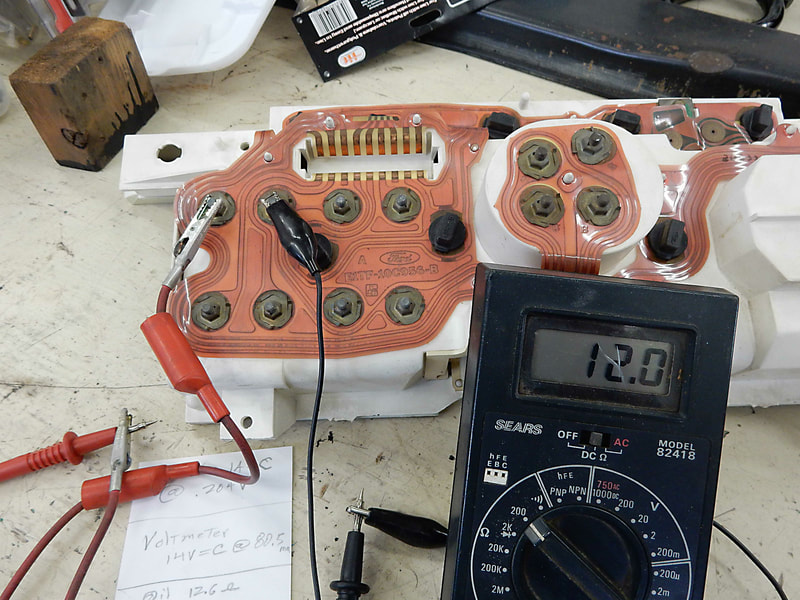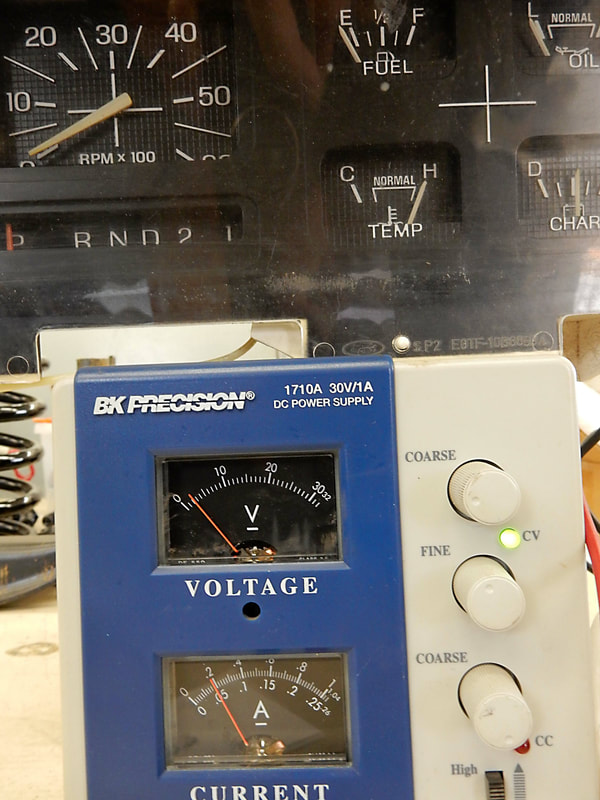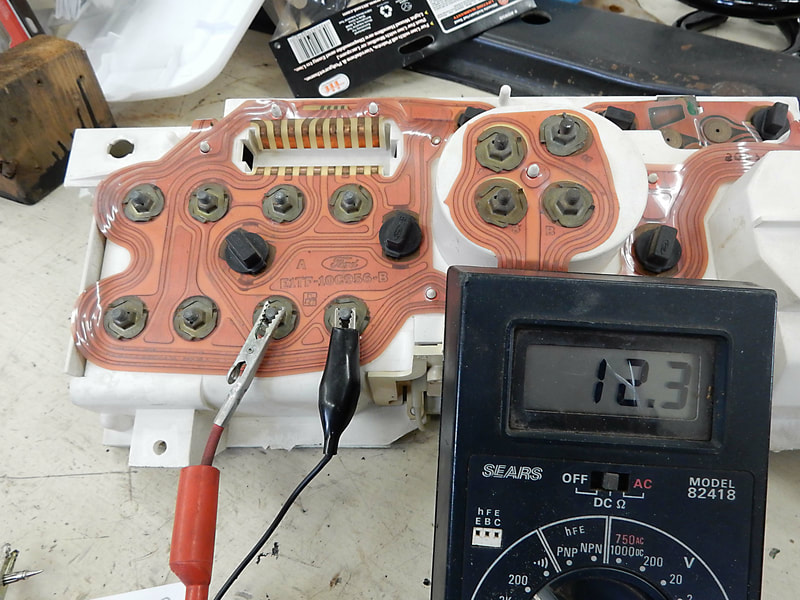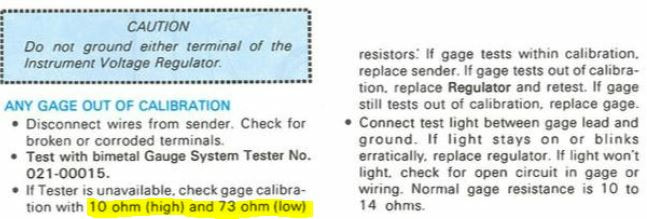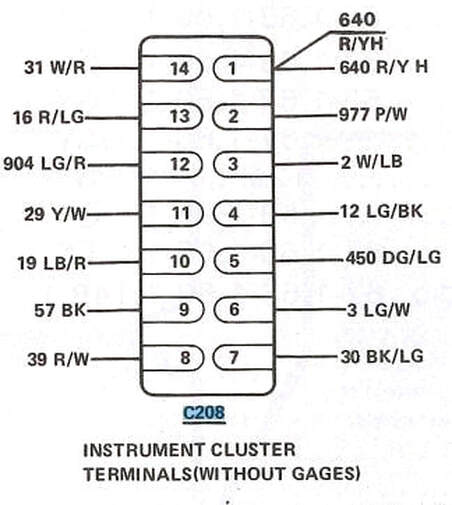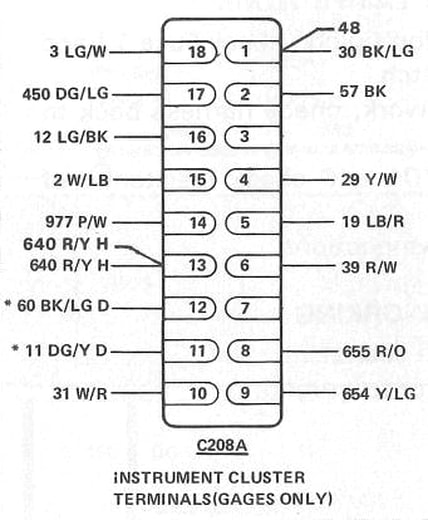gauges
Part numbers and troubleshooting techniques for the ammeter, fuel level, oil pressure, temperature, and tachometers used on the 1980 - 86 trucks.
The gauges on these trucks are of an old style, and are frequently a problem. In fact, they are actually a thermometer. Yep, they have a 12 ohm heating element beneath a bimetallic spring that when heated takes the needle upward in the scale.
They aren't actually driven by 12 volts. Instead, there's a device Ford calls an Instrument Cluster Voltage Regulator or an Instrument Voltage Regulator - ICVR or IVR. It isn't a voltage regulator, but it does reduce the power to a bit less than what 6 volts would provide to run three of the gauges - coolant temp, fuel level, and oil pressure. Ford adopted this approach to gauges in 1956 when it went to a 12v system and used it through 1986.
Here are some troubleshooting steps to determine where the problem is:
They aren't actually driven by 12 volts. Instead, there's a device Ford calls an Instrument Cluster Voltage Regulator or an Instrument Voltage Regulator - ICVR or IVR. It isn't a voltage regulator, but it does reduce the power to a bit less than what 6 volts would provide to run three of the gauges - coolant temp, fuel level, and oil pressure. Ford adopted this approach to gauges in 1956 when it went to a 12v system and used it through 1986.
Here are some troubleshooting steps to determine where the problem is:
- ICVR: Do any of the three gauges work? If so, it isn't the ICVR - go to Step 2. If none of the gauges work it may be the ICVR as there is no fuse to blow. To test the ICVR put a test light on any of the wires to the sending units and you should see the light pulse. This indicates that the ICVR is working, and the problem is probably with the gauges, the wiring, or the sending units. If the light pulses then go to Step 2. If it doesn't work you need to pull the instrument panel apart to get to the ICVR, at which point you put your test light on the input to determine that it is getting power, and on the output to see if it is working. If it has power and is working you have wiring problems between the gauge and the sending unit. If it has power and isn't working then replace it. But I would suggest building a solid-state replacement as shown here.
- Test Gauge: Pull the wire off of the sending unit for the gauge that isn't working, and ground that wire. Then get in the cab and turn the key to On. The gauge in question should swing to full scale, which proves that the gauge and wiring is good, and that just leaves the sending unit so it must be bad. Or, another way to test the oil pressure or water temp gauge is to swap the wires between those sending units. This may take a jumper on some engines, but that will show you whether or not those two sending units and gauges are working.
INSTRUCTIONS FOR RESETTING ODOMETER MILEAGE ON SERVICE SPEEDOMETER
This is to document how the Bullnose gauges work. First, they are fed via a circuit with 8 to 9 ohms of resistance, as shown in the schematic to the left, below, which is Page 98 of the 1985 EVTM, although all of the other EVTM's show the same resistance for the other years. And the picture to the right is testing my '82 wiring, which shows that there is 8.9 ohms resistance between the black/light green wire at the ignition switch and the black/light green wire on Pin 1 of the gauge connector.
Below that on the left is a picture showing that the ammeter pulls 1 amp to read full scale, and that just takes .204 volts across it. And on the right is a test of an ammeter that Rocketman Classic Cougar Innovations converted to a voltmeter. It pulls 80.5 ma (.085 amp) at full scale, which is 14 volts.
And below that are pictures of testing the gauges, which each took roughly .2 amp (200 ma) to go to full scale. And each has roughly 12 ohms of resistance.
As for the senders, they have a resistance range of from 73 ohms at the bottom of the scale to 10 ohms at the top of the scale, as shown in the picture at the bottom, which is from Page 99 of the 1985 EVTM, although all the other EVTM's have the same info.
Then there's the Instrument Cluster Voltage Regulator, which is described on the ICVR page. But basically it is a flasher that chops the voltage to the gauges, and isn't a voltage regulator at all. However, since the gauges are just thermometers driven by the heat of the current through them, the chopped voltage/current is integrated and the gauges hold steady - if the ICVR is good. As shown on the ICVR page, you can replace the chopper with a real voltage regulator set to 5.4 volts and enjoy stead gauges.
Below that on the left is a picture showing that the ammeter pulls 1 amp to read full scale, and that just takes .204 volts across it. And on the right is a test of an ammeter that Rocketman Classic Cougar Innovations converted to a voltmeter. It pulls 80.5 ma (.085 amp) at full scale, which is 14 volts.
And below that are pictures of testing the gauges, which each took roughly .2 amp (200 ma) to go to full scale. And each has roughly 12 ohms of resistance.
As for the senders, they have a resistance range of from 73 ohms at the bottom of the scale to 10 ohms at the top of the scale, as shown in the picture at the bottom, which is from Page 99 of the 1985 EVTM, although all the other EVTM's have the same info.
Then there's the Instrument Cluster Voltage Regulator, which is described on the ICVR page. But basically it is a flasher that chops the voltage to the gauges, and isn't a voltage regulator at all. However, since the gauges are just thermometers driven by the heat of the current through them, the chopped voltage/current is integrated and the gauges hold steady - if the ICVR is good. As shown on the ICVR page, you can replace the chopper with a real voltage regulator set to 5.4 volts and enjoy stead gauges.
These are the pin-outs for the printed circuit connections to the gauges. However, this is for 1981 - 86 trucks as pins 17 and 18 are swapped for the 1980 trucks. In fact, if you want to use a 1981-86 cluster in a 1980 truck you need to read this: HOWTO: 81-86 gauge cluster in 80 model (gauge models ONLY!)





